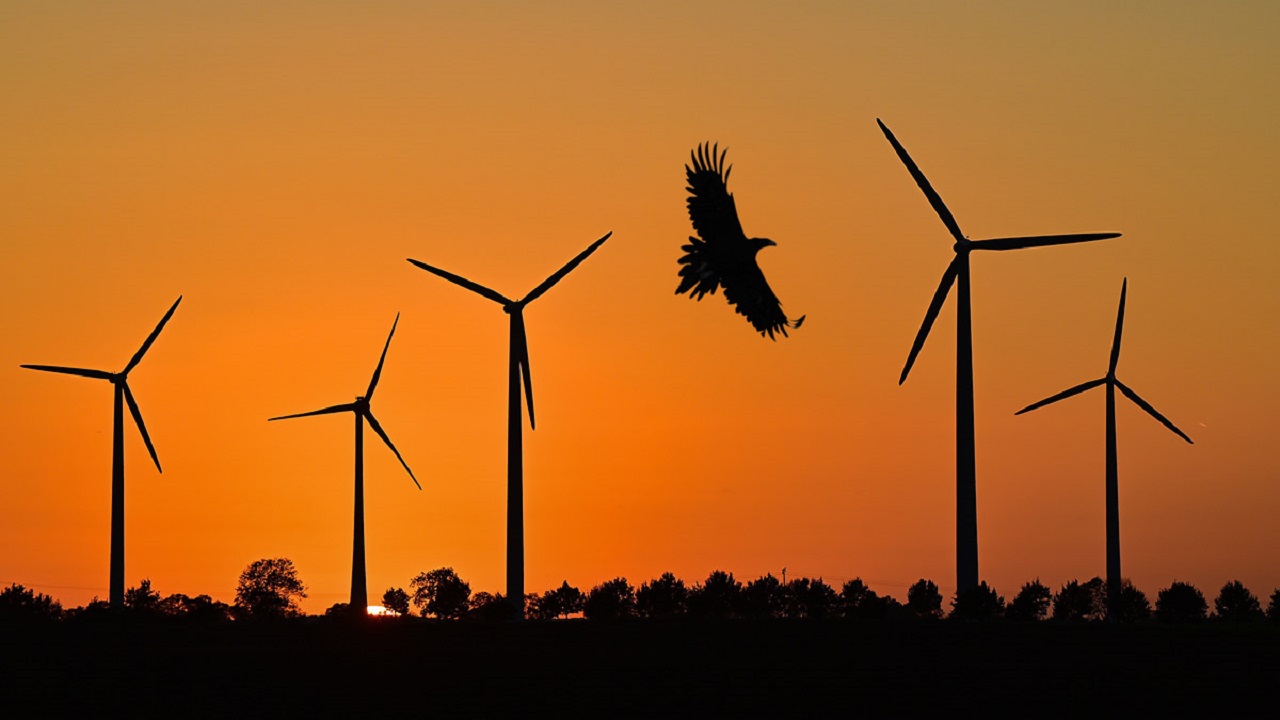Clean Energy Ambitions: Ecological Costs Ignored
Context
In early 2025, India added 3.5 GW of wind power capacity, marking an impressive 82% year-on-year growth. While this reflects India’s strong push towards renewable energy, it has also triggered ecological concerns. A study by the Wildlife Institute of India (WII) highlighted a significant rise in bird deaths near wind turbines in Rajasthan’s Thar Desert, sparking national debate on the unintended environmental costs of clean energy expansion.
Introduction
India's transition to clean energy is essential to meet its climate commitments and reduce carbon emissions. However, the expansion of wind power infrastructure, especially in ecologically sensitive regions, must be balanced with the need to conserve biodiversity. Recent findings from the Thar Desert reveal a disturbing trend of increasing avian mortality linked to wind turbines, urging the need for a more integrated and responsible renewable energy policy.
Key Findings from the WII Study (Thar Desert)
-
The study was conducted across a 3,000 sq. km area in Jaisalmer, Rajasthan.
-
It covered 90 wind turbines, where 124 bird carcasses were found.
-
An estimated 4,464 bird deaths per 1,000 sq. km per year were recorded.
-
Control sites with no turbines showed zero bird deaths.
-
Critically endangered species such as the Great Indian Bustard were found to be at risk.
-
Raptors were the most affected group due to their flight patterns and biological vulnerability.
-
Bird deaths were caused by collisions with turbine blades and associated power lines.
Why Bird Mortality is a Serious Concern
-
The Thar Desert lies on a major migratory flyway, and wind turbines disrupt these routes.
-
Raptors, with slow reproductive cycles, are especially vulnerable to population decline due to increased mortality.
-
Regions like Jaisalmer are rich in bird biodiversity, including endangered species.
-
Earlier studies underestimated the risk due to limited turbine coverage and lower bird density.
-
Loss of birds disrupts ecological balance, leading to pest outbreaks and harming agricultural productivity.
Policy Gaps and Ecological Oversight Issues
-
Onshore wind farms are currently exempt from mandatory Environmental Impact Assessments (EIAs).
-
Wildlife clearance processes often overlook biodiversity impacts, especially in ecologically rich zones.
-
Offshore wind projects are based on rapid and shallow EIAs, lacking depth and long-term vision.
-
Present assessments do not account for cumulative regional and ecological impacts.
-
There is a lack of coordination between MNRE and MoEFCC, delaying ecological safeguards and action.
Proposed Mitigation Measures and Tools
-
Painting one turbine blade black has been found to reduce bird collisions by enhancing blade visibility.
-
Timed shutdowns of turbines during peak bird migration can significantly reduce mortality.
-
Reorienting turbine layouts to avoid bird flyways can minimize ecological disruption.
-
Use of tools like AVISTEP can help in mapping bird-sensitive zones for responsible site planning.
-
Ground-level field surveys are essential to support and validate data obtained through remote sensing.
Way Forward
-
Mandate comprehensive EIAs for both onshore and offshore wind energy projects.
-
Promote ecology-based zoning, with wind sites allocated based on avian migration routes and biodiversity data.
-
Deploy radar systems and AI tools to monitor bird movement and enable automated turbine shutdowns when necessary.
-
Involve ecologists and local communities in planning, siting, and clearance processes.
-
Support long-term, multi-seasonal research to assess and mitigate biodiversity risks associated with wind energy.
Conclusion
While India’s shift to renewable energy is critical for achieving sustainable development goals, it should not come at the expense of biodiversity. The rising bird mortality in the Thar Desert underscores the need for ecological planning, scientific site selection, and stringent impact assessments. A truly green transition requires a balance between clean energy development and environmental conservation, ensuring that progress does not compromise the planet’s ecological health.



_(18).jpg)
Comments (0)